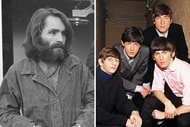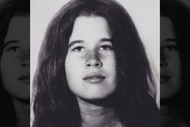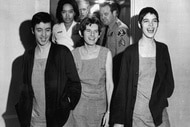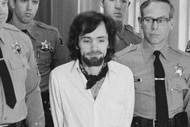The Twisted Case Of Dr. Hawley Harvey Crippen, Hung For Poisoning And Dismembering His Wife
It was Feb. 1, 1910 when anyone last saw Crippen's wife, Corrine "Cora" Turner, alive, a disappearance that kicked off an investigation that led to the doctor being hung for her murder after running off with a lover disguised as a teen boy.

From extramarital affairs to poisoning, murder, dismemberment and an eventual hanging — the case of Dr. Hawley Harvey Crippen has it all.
It was in the early morning hours of Feb. 1, 1910 when anyone last saw his wife alive, a disappearance that kicked off an investigation into their unconventional marriage and eventually led to Crippen being hung for her murder after running off with a lover disguised as a teen boy.
The wife in question was Corrine "Cora" Turner, a performer who used the stage name Belle Elmore, and whom Crippen married in the early 1890s after his first spouse died from a stroke, according to The Telegraph.
Born in Michigan, Crippen was a homeopath working in New York at the time of his marriage to Cora. In 1900, the couple moved to London while Crippen was a rep for the homeopathic remedies company Munyon’s Remedies, and Cora was an aspiring music hall singer, according to John J. Eddleston’s 2008 book, “A Century of London Murders and Executions.”
The book describes Cora — whose birth name was Kunigunde Mackamotzki — as “overbearing and dominant,” while her husband was said to have been supportive of her desires to be an opera singer and music hall performer.
While she wasn’t very successful, she made a few contacts in the industry and got a job as treasurer of London’s Music Hall Ladies Guild.
Cora also carried out several love affairs with other men, according to Encyclopædia Britannica.
RELATED: Who Was Black Dahlia Murder Victim Elizabeth Short?
The married couple took out a lease in 1905 on a place at 39 Hilldrop Crescent in Holloway, a district in the London borough of Islington. The fact that they could have separate bedrooms here was part of their decision to move in, according to "A Century of London Murders and Executions."
They took in lodgers at the address and in 1906, Crippen found his wife in bed with one of them, according to the Oxford Dictionary of National Biography.
Meanwhile, Crippen had already fallen in love with his typist, Ethel Clara Le Neve, a few years earlier. Finding his wife with a lodger prompted him to consummate his relationship with Le Neve, according to Oxford.
Crippen had said that all physical relations between himself and Cora stopped around 1907, the book states.
Still together though, the couple hosted a dinner party on the night of Jan. 31, 1910 for a pair of close friends of Cora’s, Paul and Clara Martinetti. There was one incident that stood out that evening.
Paul had asked to use the bathroom, and after Crippen didn’t show him where it was located upstairs, Cora berated him in front of the guests.
The Martinettis left around 1 a.m. on Feb. 1, which was the last time anyone saw Cora alive.
When people asked where Cora was in the coming days, Crippen told them she'd left for America. He later changed his story and said she had fallen ill. Finally, he started saying that his wife had died.
But people noticed that Crippen’s lover, Le Neve, started wearing Cora’s jewelry and had moved into the Hilldrop Crescent home by the end of February. Friends made police aware of their suspicions.
On July 8, Chief Inspector Walter Dew, of the Metropolitan Police, visited Crippen at work after showing up at his home and finding only Le Neve there. The two men came back together and Crippen showed Dew around the house.
The doctor also again changed his story. He told Dew that Cora had left for another man, likely an American she’d met in 1903 named Bruce Miller, according to the book.
Crippen had said he lied about being left by Cora because he was humiliated by it, according to Oxford Dictionary.
The doctor, sent into a panic by Dew’s visit, fled the next day. Police searched the home and initially found nothing, until Dew removed the flooring of the kitchen coal cellar.
It was under there that authorities found a human torso, missing its head and limbs, and “desexed,” according to Oxford. The remains were wrapped in a pajama jacket and were found to contain hyoscine, a poison that Crippen was said to have bought before his wife vanished.
By July 9, the day after Dew’s visit with Crippen, the doctor had shaved off his mustache and fled to Brussels — with Le Neve disguised as a boy.
The lovers then headed further north in Belgium to Antwerp, where they boarded the SS Montrose, pretending to be father and son as the ship made its way toward Canada.
But the ship’s captain, Henry Kendall, spotted the pair holding hands and suspected they were really Crippen and Le Neve. The quick-thinking captain had staff use wireless telegraphy to get a message to Scotland Yard, passing along descriptions of the pair.
Dew set out on a faster transatlantic ocean liner, the Laurentic, and was able to get to Montreal three days before the Montrose and have the couple arrested on the ship. They were eventually taken back to England to face trial.
Crippen claimed at his trial that the body found in the cellar must have already been there when he moved into the home. However, prosecutors were able to prove that the pajamas found with the body were made after he moved to the address.
And a pathologist said that the flesh found at Crippen's home had an abdominal scar that was consistent with Cora’s ovariectomy.
Additionally, medical tests showed that the flesh found had traces of hyoscine, a poison that Crippen bought five grains of two weeks before Cora disappeared.
A jury took less than 30 minutes to find Crippen guilty of the murder. He was hanged on Nov. 23, 1910, at Prison Pentonville in north London at age 48.
Le Neve, meanwhile, was acquitted in a separate trial on Oct. 25 for the charge of being an accessory after the fact.
Crippen’s last request before being hung was for a photo of Le Neve and some of her letters to be buried in his grave with him, a request that was reportedly granted.




























